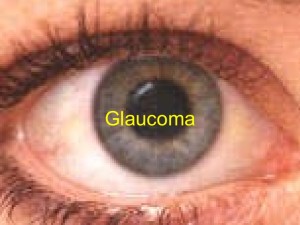A Glaucoma is a group of eye diseases which result in damage to the optic nerve and vision loss. In most cases, glaucoma is asymptomatic until the late stages of the disease and diagnosis are frequently delayed, resulting in significant, irreparable, damage to vision. Glaucoma cases increase with age and elder people of today are more demanding in seeking care. Glaucoma is a group of progressive optic neuropathies which are characterized by degeneration of retinal ganglion cells and resulting changes in the optic nerve head and visual loss.
Loss of retinal ganglion cells is frequently, but not always, related to ocular pressure. Other factors may also play a role, including family history of glaucoma, older age, and use of systemic or topical corticosteroids. In general, initial (early stage) glaucoma causes a loss of the nasal visual field which is often compensated for by the visual field of the other eye; therefore in most cases, binocular vision is unaffected.
Glaucoma Symptoms & Signs:
Eye pressure may be normal or slightly elevated when measured by the health care provider, reducing the chance of early detection. The appearance of the optic nerve head is often the first sign of glaucoma. The diagnosis then needs to be confirmed by visual field testing.
Reduction of ocular pressure is the only method proven to effectively treat glaucoma. Nowadays there are a number of drugs which have been shown to have a large effect to reduce or halt the progression of, the disease by reducing ocular pressure. Unfortunately, their efficacy is often accompanied by local side effects. Patients with early stage glaucoma usually have a good quality of life, which may be impaired by drug side effects.
In the long run, many patients will need a combination of drugs to control the disease progression and a minority will undergo more invasive treatments such as laser trabeculoplasty and surgery. Surgery is usually very effective but patients run the risk of potentially severe side effects, including the loss of vision.
We need more advertising and help from all health care providers (optometrists, general practitioners, general ophthalmologists) to improve early detection.
Public health campaigns play a role increasing the awareness of the disease, encouraging regular eye checks and implementing screening programs for high-risk populations. Finally, all elder citizens should be motivated to undergo regular eye examinations even in the absence of disturbing symptoms of the eye or vision.

